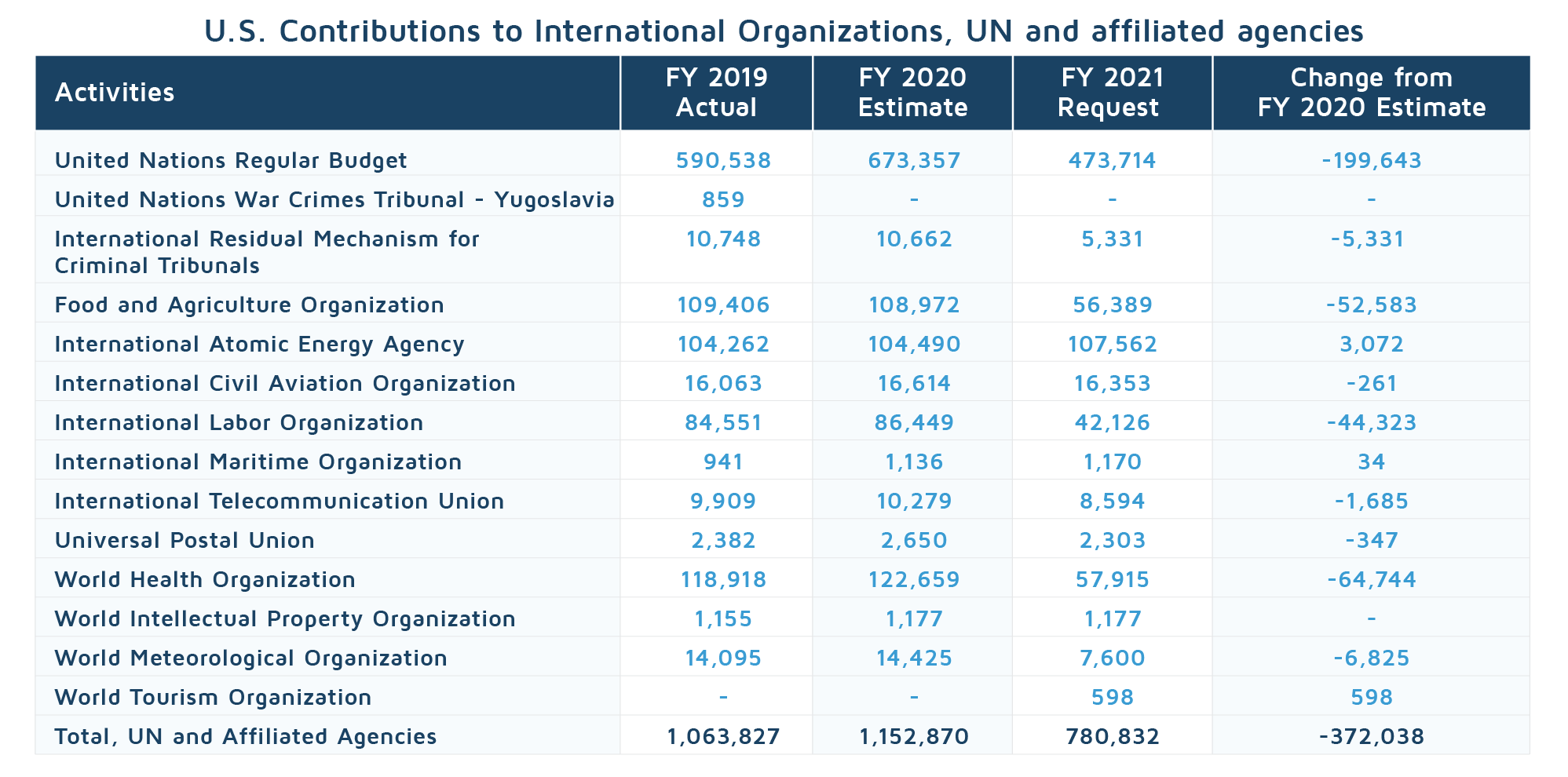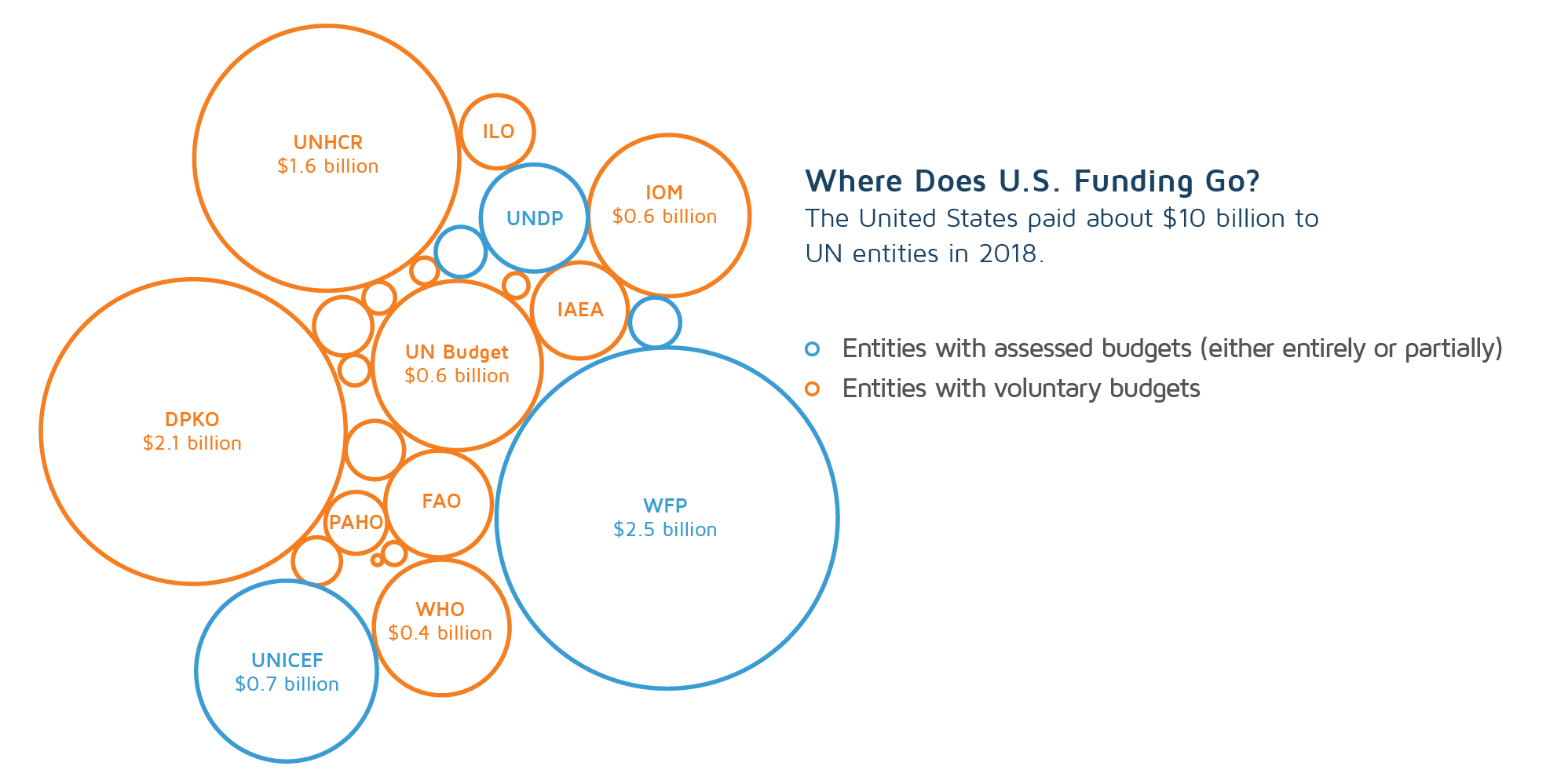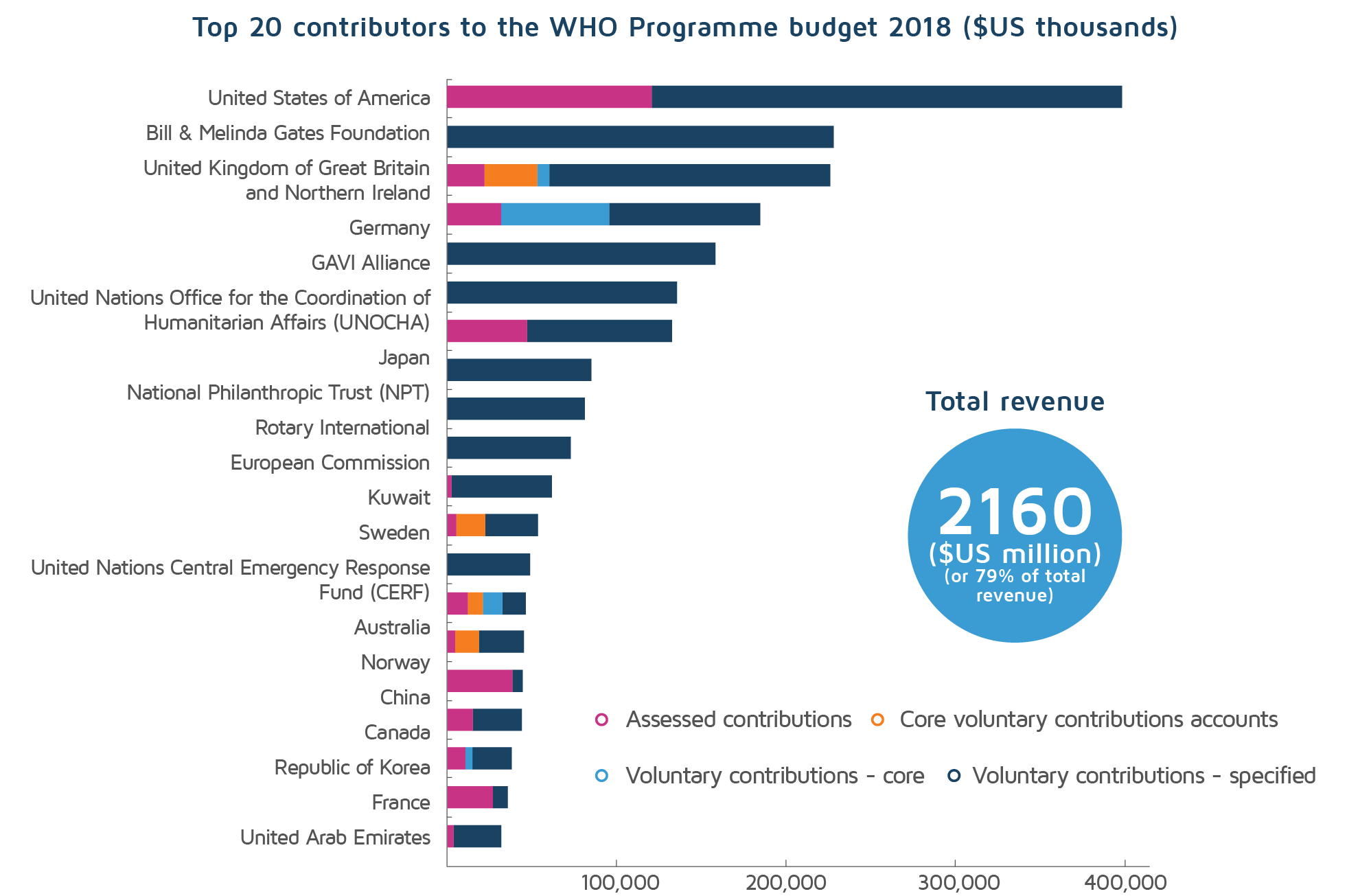The White House’s 2021 budget proposal for foreign assistance will feature the most drastic cut in the last four years and once again opens the discussion regarding both the contribution from the U.S. and its stance on foreign aid. This article will detail what the U.S. contribution to major international organizations is assessed to be, what the proposed cuts for 2021 are, and how these could affect international aid.
The U.S. government’s 2021 budget request for foreign operations will include the fourth attempt to cut funding for aid. It has always been President Trump administration’s strategic goal to review and recalibrate the country’s contribution to foreign aid, specifically to certain international organizations. For 2021, the White House’s motivation behind the proposed review is the prioritization of funding to programs whose missions substantially advance U.S. foreign policy interests while reductions are made to programs with unproven results or whose work does not reflect U.S. national security interests. Notwithstanding the previous four budget requests for cuts to be made, the overall U.S. contributions have remained steady in recent years, with the American Congress approving higher contributions than those requested by the Trump administration every time.
“The Budget recalibrates American contributions to international organizations to a more sustainable level, maintaining American leadership while asking other nations to increase their support”, states the Secretary of State, Mike Pence in the 2021 Budget Request.

Source: Congressional Budget Justification for 2021, U.S. State Department
Overall, the proposal seeks to cut aid to UN peacekeeping efforts by close to half a billion dollars and also to cut the same amount of funding to the Contributions to International Organizations which is comprised of 43 organizations in total and includes assessed contributions to both the United Nations regular budget and funds for specialized agencies. The most notable reductions in funding for UN-affiliated agencies include those for the World Health Organization (WHO), the International Labor Organization (ILO), and the Food and Agriculture Organization (FAO).

Source: Congressional Budget Justification for 2021, U.S. State Department
Of the six regional organizations that the U.S. is a member of and to which it pays assessed contributions, the 2021 budget proposal seeks to cut the entire funding of US$73 million paid to the Organization for Economic Cooperation and (OECD) and apply a US$7 million cut to the amount paid to the North Atlantic Treaty Organization (NATO).

In 2018, the U.S. contributed US$10 billion to UN programs and agencies, making it the biggest contributor to the international organization, according to the latest data available for the full year. The data indicates that the U.S. contributed 22% of the regular UN budget and 28% of the UN peacekeeping operations with two-thirds of the total contribution to the UN being voluntary and one-third assessed. This represents almost ⅕ of the country’s total foreign aid budget for 2018, which is around 46 billion US$. The White House’s proposed budget cuts for 2021 could see a reduction of 30% for the contributions to the UN’s regular budget, and a reduction of 30% for the contributions to the UN peacekeeping operations. In 2017, the White House administration suspended all funding to the UN Population Fund and since then has also reduced funding for UNAIDS and the WHO.
The White House administration cut funding for the United Nations Population Fund citing that the organization’s operations violate an anti-abortion policy enacted by the administration. It also stated in March 2020 that it would withdraw the U.S. from the WHO over concerns regarding the influence of China on the body’s decision-making.

Source: Council on Foreign Affairs
The U.S. is also the largest contributing government to the WHO’s annual budget, in terms of both assessed and voluntary contributions. Although voluntary contributions from philanthropic foundations and other organizations have grown and now dominate the WHO’s budget, the assessed contributions provide operational support for the organization. It is here that the U.S.’s input is significant, having provided US$230 million or 22% of the total assessed fees, the largest contribution by a single country. In addition, the U.S. pledged more than US$656 million in voluntary funding for specific programs. The U.S.’s budget proposal for 2021 cut funding to the WHO’s operational budget with 50%.

Source: WHO Results Report, Programme Budget 2018-2019
The U.S. is also the main contributor to the OECD’s yearly operational budget. The overall OECD budget for 2019 amounted to EUR 386 million which was comprised of an operational budget and a programs specific budget. In 2019, the U.S. contributed US$74 million, making it the single largest contributing country to the organization and accounting for 20% of total contributions.
DevelopmentAid provides information on funding opportunities from major international organizations. You can become a Member and search through UNDP tenders and grants as well as opportunities from the WHO.

